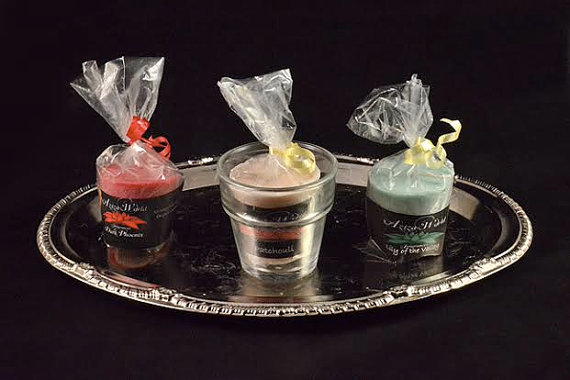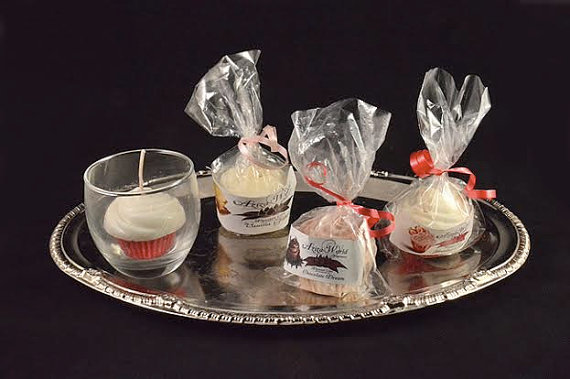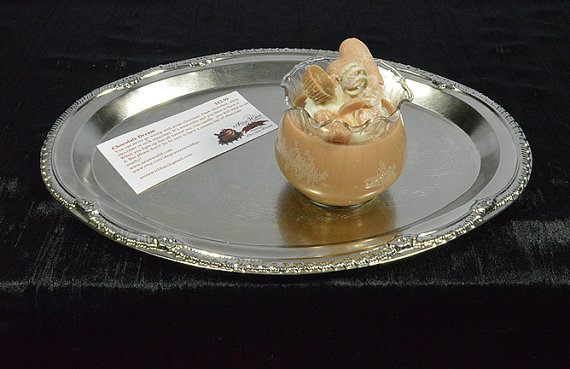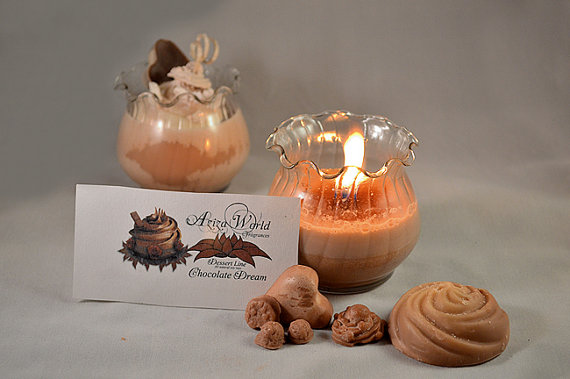|
CANDLES INSTRUCTIONS AND SAFETY TIPS

Download the PDF version here
Thank-you for your purchase of my top quality "All Natural Soy Candles." My candles, like my perfumes, are handmade and poured and are modeled after my unique fragrance line, but I make customs as well. I use 100% pure essential oils combined with premium grade fragrance oils.
If you need any other assistance, please email me at azizaworldinc@gmail.com
Sincerely,
Aziza A.Poggi
Creator of Aziza World Fragrances, LLC
How To Burn a Candle:
For the best performance, you should keep the candle wick trimmed to ¼ of an inch at all times. The flame may start out small at first, but it will get larger quickly as the candle continues to burn. As the candle burns, keep an eye on the wick. As the wax level lowers, the wick will get longer. If at any point the flame starts to flicker and jump, extinguish the candle and trim the wick.
A pool of melted wax will form around the wick as it burns. If the melted wax does not reach the edge of the jar, it will create a ring in the wax, and the next time you burn the candle the wax will only melt as far as that ring. After a few cycles of this, the wick begins to tunnel down the middle of the candle so the candle is unusable. A good rule of thumb is to let the candle burn for one hour per inch of diameter.
Watch also this video : Dessert Line care www.youtube.com/watch?v=SGRPJ6QhqH0
Safety:
The National Fire Safety agencies report that the bulk of candle fire incidents in the United States are due to consumer inattention to basic fire safety or to the misuse of candles.
The National Candle Association recommends the following safety tips when burning candles:
- Always keep a burning candle with sight. Extinguish all candles when leave a room or before going to sleep.
- Never burn a candle on or near anything that can catch fire. Keep burning candles away from furniture, drapes, bedding, carpets, books, paper, flammable decorations, etc.
- Keep candles out of the reach of children and pets. Do not place lighted candles where they can be knocked over by children, pets or anyone else.
- Read and carefully follow all manufacturer instructions.
- Trim candlewicks to 1/4 inch each time before burning. Long or crooked wicks cause uneven burning and dripping.
- Keep burning candles away from drafts, vents and air currents. This will help prevent rapid, uneven burning, smoking and excessive dripping. Drafts can also blow lightweight curtains or papers into the flame where they could catch fire. Ceiling fans can cause drafts.
- Keep the wax pool free of wick trimmings, matches and debris at all times.
- Do not burn a candle for longer than 4 hours at a time. Always burn candles in a well-ventilated room.
- Extinguish the flame if it comes too close to the holder or container. For a margin of safety, discontinue burning a candle when 2 inches of wax remains (1/2 inch if in a container). This will also help prevent possible heat damage to the surface and prevent glass containers from cracking or breaking.
- Never touch or move a votive or container candle when the wax is liquid.
- Candles should be placed at least three inches apart from one another. This is to be sure they don't melt one another, or create their own drafts that will cause the candles to burn improperly.
- One of the safest ways to extinguish a candle is to use a candle snuffer, which helps prevent hot wax from spattering. Do not extinguish candles with water. The water can cause the hot wax to spatter and can cause glass containers to break.
- Flashlights and other battery-powered lights are much safer light sources than candles during a power failure.
- Never use a candle as light when you go into a closet to look for things.
- Never use a candle for light when fueling equipment such as a lantern or kerosene heater.
Soy vs Paraffin:
- Paraffin wax candles are known to have 11 toxins that are released into the air while burning.
- Paraffin comes from petroleum.
- Burning a paraffin candle can contribute to asthma and allergy attacks. Those with allergies are less likely to have a reaction with soy candles over paraffin due to its gentle burning.
- There is a considerable reduction of soot emission when burning soy wax. Sooting is the black residue on the walls; ceiling and candle jar which is usually caused from a paraffin candle. The black residue also can get in your lungs.
- Soy is naturally grown and is non-toxic.
- Soy wax comes from soy beans and doesn't contain pollutants.
- Soy is biodegradable.
- Clean up of soy can be done by using soap and water and containers can be reused.
- There are special wicks used for soy wax candles that don't contain lead.
- Soy wax helps support American Soy Bean Farmers
- Soy wax burns completely while paraffin leaves a portion of the wax at the bottom of the container.
- Soy wax burns at a cooler and lower temperature making the burn time for the candle longer.
|




 |
Warning:
With all fragrances, lotions, and cosmetics, some products may cause skin irritation. If irritation occurs, discontinue use. Avoid contact with eyes, keep away from children, keep away from fire and do not drink. For sensitive skin, spray upon your exterior clothing and wait 20 minutes before dressing.
|